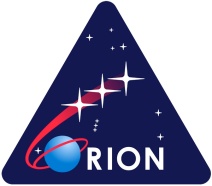On the morning of December 4 2014, at 7:05 a.m. EST, a ULA Delta IV Heavy will thunder into the sky from Cape Canaveral Air Force Station’s Pad 37, its orange-and-white triple-barreled, Boy Scout salute-shaped rocket carrying NASA’s next-generation Orion space vehicle 3,600 miles into space where it will perform a multi-stage orbital test before splashing down in the Pacific. Called Exploration Flight Test 1 (EFT-1 for short) it will be the first high-altitude flight of the Lockheed Martin-built Orion vehicle and the first step in NASA’s current goal of sending humans farther out into the Solar System than ever before.

The video above shows what will happen during the four-hour EFT-1 “Trial by Fire,” from liftoff to splashdown.
And while nobody will be on board Orion for this flight, I (and quite a few other space fans!) will be on board for a NASA Social event at the Cape and Kennedy Space Center, where we’ll learn more about Orion, NASA and its commercial crew partners, and ultimately watch the launch from the Causeway viewing site from the incredibly close distance of 2.7 miles! It’ll be loud, it’ll be bright, and it will be the beginning of a new era for NASA. I’m honored to be able to be a part of it!
Want to know more about Orion’s first flight? Check out an infographic below of what will happen on Dec. 4:

Fact: During re-entry, 11 parachutes will be deployed to reduce Orion’s velocity! Here are some more facts about Orion:

• Orion will return to Earth at a speed of about 25,000 mph (40,233 km/h) from its missions to near-Earth asteroids or Lagrange points. A spacecraft’s re-entry speed from a Mars mission would be about 27,000 mph – nearly 20 times faster than a supersonic jet can travel (and more than 35 times faster than most speeding bullets).
• During Earth atmosphere re-entry from a mission to the moon, Orion and its heat shield must protect the vehicle and crew from external temperatures up to 5,000°F (2,760°C).
• At 16.5 feet (5 meters) in diameter Orion’s heat shield is the largest ever built.
• Orion’s master computer provides significantly faster computing speed over other human space flight vehicles:
• 4000 times faster than Apollo
• 400 times faster than the Space Shuttle
• 25 times faster than the International Space Station
(Source: Lockheed Martin)
Also, check out this article on CNBC by Jane Wells about the Orion EFT-1 launch and NASA’s future in human spaceflight.
“Flight tests are difficult and complex. But they give us confidence that the systems we have designed work under real flight conditions.”
– Kelly Smith, NASA engineer, Orion Navigation and Guidance
Eventually crewed Orion vehicles will launch aboard NASA’s next super-heavy-lift rocket, the Space Launch System (SLS).
So keep an eye on Lights in the Dark for more info about the launch and the Orion mission, and be sure to follow me on Twitter, Facebook, and Instagram for updates, news, and pictures live from the Cape on Dec. 3 and 4. Go Delta! Go Orion!

Good luck to Orion mission 😉
And dear Jason, you’re really fortunate to be still able to be a participant and it closely!! – of the launch of ULA Delta IV Heavy and NASA’s next-generation Orion space vehicle. Put we on-line on all the photos which you will have made…
Jeff Barani from Vence (France)
LikeLike